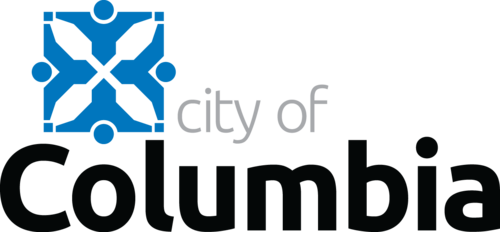
Housing, Buildings & Development
Emissions from residential, commercial, and industrial buildings. Designing new buildings and retrofitting existing buildings to maximize efficiency and use of renewable energy sources reduces emissions, saves money, and increases our resilience to changing climate conditions.
The Climate Action and Adaptation Plan (CAAP) identifies three key housing, buildings & development goals :
- Increase energy efficiency with CWL's rebates and loan programs for residential and commercial customers.
- Reduce fossil fuel use.
- Enhance building resilience.
Housing, Buildings & Development
Be Part of the Solution!
There are a number of programs to support Columbia in our effort to reduce energy use.
Climate Change & Our Built Environment
Fire Station No. 11
Fire Station 11, completed in September 2023, marks a significant milestone for the City of Columbia as it represents our largest solar installation on any municipal building to date. Built to serve the expanding needs of the community, Fire Station 11 stands as a testament to the City’s commitment to sustainability, energy efficiency, and renewable energy integration.
Sustainable Design Features:
• Ground-source heating and cooling system for enhanced energy efficiency.
• Roof-mounted solar panels to reduce reliance on non-renewable energy sources.
• Daylight dimming controls and lighting occupancy sensors to minimize unnecessary lighting usage.
• Controls added to prevent apparatus bay unit heaters from running when garage doors are open, ensuring further energy savings.
Together, we’re building a safer and greener future for all!
Housing, Buildings & Development
Cullimore Cottages
Cullimore Cottages is an affordable housing development located in Columbia, Missouri, initiated by the Columbia Community Land Trust (CCLT) to provide energy-efficient and cost-effective homes for residents. The project consists of ten single-family homes situated near the intersection of Eighth Street and North Boulevard, just south of Business Loop 70.
The development is named in honor of Dan Cullimore, a devoted advocate for affordable housing in Columbia who passed away in December 2017. His commitment to the community is commemorated through this project.
Each home in Cullimore Cottages features either two or three bedrooms, two bathrooms, and a one-car garage. Additionally, the homes are equipped with solar panels to enhance energy efficiency and reduce utility costs. Prices for the homes range from $135,000 to $145,000, depending on specific features and sizes.
Climate Change & Our Built Environment
Green Infrastructure
Addressing Stormwater Pollution with Green Infrastructure
Climate change is increasing the amount and intensity of stormwater runoff, a major contributor to water pollution. Scientists estimate that up to 70% of the pollution in our streams, rivers, and lakes comes from stormwater carrying pollutants off streets, rooftops, and other hard surfaces.
To address this challenge, the City of Columbia, Boone County, and the University of Missouri (MU) are collaborating to explore eco-friendly solutions, specifically green infrastructure.
One example is the use of pervious pavers in Douglas Park. These specially designed surfaces allow rainwater to soak into the ground, much like it would in a natural setting, instead of running off into storm drains.
Green infrastructure mimics the natural water cycle by using features like rain gardens, green roofs, and permeable pavements to absorb and filter stormwater before it reaches our waterways.
By studying how these systems perform and identifying best practices, local researchers are helping our community reduce water pollution and protect our environment for future generations.
Climate Change & Our Built Environment
Rental Energy Efficiency Scores
Office of Neighborhood Service Rental inspectors have begun including the generation of an Energy Efficiency Score as part of a rental inspection. Home Energy Scores map for all participating properties (rental and owner-occupied) can be found here.
Climate Change & Our Built Environment
Protecting our Buildings
As the climate continues to change, Columbia communities face vulnerabilities related to their built environment, especially housing and Infrastructure. All this will increase demand for air conditioning, raising energy costs, which will be especially difficult for lower-income households to bear. Climate change is expected to increase air temperatures in Columbia, with summertime highs reaching nearly 104F and nightly lows staying at 80F. Additionally, Columbia is expected to face more frequent heavy rainfall, increasing the risk of flooding, especially in flood-prone areas. The City offers a buyout program along with repair and rehabilitation funds for low and moderate-income families.
As the climate continues to change, in the next 30 years Columbia communities are likely to face vulnerabilities related to… Learn more about what we can expect.
Energy Efficient Buildings
Municipal Energy Efficiency
To reduce greenhouse gas emissions and use energy and financial resources efficiently, the City of Columbia passed a Building Energy and Transparency Policy in 2021. Tracking energy cost, consumption, and greenhouse gas emissions of municipal buildings informs our priorities for energy efficiency projects. Benchmarking data will inform improvements in municipal energy efficiency.
What are the Lynn Street Cottages?
The City of Columbia has been working alongside neighborhood and community members to redevelop the blocks of Garth, Sexton, Oak, and Lynn with affordable housing and improved infrastructure. The project includes the development of eight affordable owner-occupied homes with near-net-zero energy usage design and universal design features.
The homes were developed in a cottage housing style arrangement to increase the density of the development. The development also included significant stormwater improvements to benefit the surrounding neighborhood.
The Lynn Cottages development also coincided with the City’s creation of the Columbia Community Land Trust, which will ensure the homes remain affordable, owner-occupied, and well-maintained for generations to come.
